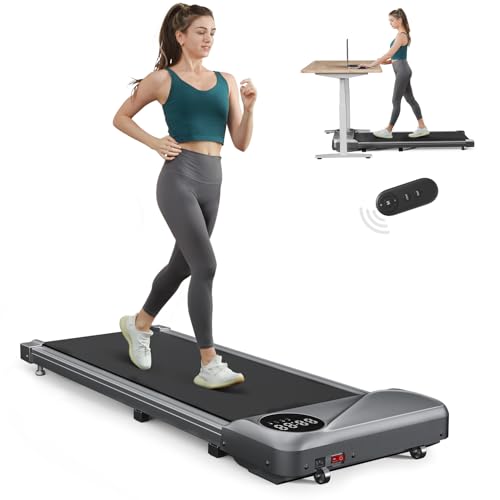Treadmills: A Comprehensive Guide to Understanding Their Functionality, Benefits, and Appropriate Selection
Intro
Treadmills have actually become a staple in modern physical fitness routines, both in homes and fitness centers worldwide. They use a convenient and efficient way to maintain cardiovascular health, increase endurance, and assist in weight management. This short article checks out the various types of treadmills, their benefits, features to consider when buying, and some FAQs to guide users in making notified choices.
Kinds of Treadmills
When it pertains to selecting a treadmill, it is essential to comprehend the various types offered in the market. Here are the primary classifications:
1. Handbook Treadmills
- System: These treadmills have a basic style and rely on the user's efforts to move the belt.
- Pros: More budget friendly, quieter operation, no electrical power required.
- Cons: Limited functions, may not supply the exact same variety of workout intensity.
2. Motorized Treadmills
- System: Powered by a motor that drives the belt, allowing users to walk or perform at a set speed.
- Pros: Greater range of speeds and slopes, geared up with various functions such as heart rate monitors and workout programs.
- Cons: More pricey and might require more maintenance.
3. Folding Treadmills
- Mechanism: Designed for those with minimal area, these treadmills can be folded for easy storage.
- Pros: Space-saving, frequently motorized, versatile functions.
- Cons: May be less durable than non-folding models.
4. Commercial Treadmills
- System: High-quality machines designed for usage in fitness centers and gym.
- Pros: Built to stand up to heavy use, advanced features, frequently include guarantees.
- Cons: Pricey and not ideal for home usage due to size.
5. Curved Treadmills
- Mechanism: An unique design that allows users to move the belt utilizing their own energy.
- Pros: Offers a more natural running experience, promotes better running form.
- Cons: More costly and can be noisier.
| Treadmill Type | Pros | Cons |
|---|---|---|
| Manual | Affordable, no electricity required | Limited functions |
| Motorized | Range of speeds, advanced features | Upkeep needed |
| Folding | Space-saving, typically motorized | May lack sturdiness |
| Commercial | Built to last, professional-grade functions | Costly |
| Curved | Natural running experience, promotes great type | Higher rate |
Advantages of Using Treadmills
Treadmills offer numerous benefits that can add to one's total health and wellness goals. A few of these advantages consist of:
- Convenient Workouts: Treadmills enable users to exercise inside your home regardless of climate condition.
- Cardiovascular Health: Regular usage can enhance heart health by increasing stamina and promoting healthy flow.
- Weight Management: Effective for burning calories, which assists in weight reduction and management.
- Personalized Workouts: Users can control speed, incline, and duration to produce individualized exercise experiences.
- Security: Treadmills provide a predictable surface, reducing the danger of falls compared to outside running.
- Multifunctional: Many treadmills included functions like heart rate monitors, exercise programs, and even entertainment systems.
Picking the Right Treadmill
When choosing a treadmill, prospective buyers must consider a number of crucial aspects:
Features to Consider:
- Motor Power: Typically measured in horse power (HP), a motor strength of at least 2.5 HP is advised for serious runners.
- Belt Size: A longer and larger belt accommodates various stride lengths, offering comfort throughout workouts.
- Incline Settings: Adjustable incline features replicate outdoor hill running and can increase exercise strength.
- Weight Capacity: Ensure the treadmill can support the user's weight for security and longevity.
- Console Features: Look for easy to use dashboards, workout programs, and Bluetooth compatibility for streaming music or other functions.
Spending plan Considerations
- Under ₤ 500: Entry-level manual treadmills appropriate for casual walkers.
- ₤ 500 - ₤ 1,500: Mid-range motorized treadmills that use more functions and much better resilience.
- ₤ 1,500 - ₤ 3,000: High-end models with innovative technology, bigger motors, and longer warranties.
- Over ₤ 3,000: Commercial-grade treadmills perfect for regular usage in fitness centers or training facilities.
Regularly Asked Questions (FAQs)
1. How often should Harris Gilpatric use a treadmill?
It is advised to use a treadmill at least 3 to five times a week, incorporating different intensity levels for best results.
2. Can I slim down by utilizing a treadmill?
Yes, constant usage of a treadmill can add to weight reduction, particularly when integrated with a well balanced diet and strength training.
3. What is the very best speed to stroll on a treadmill for beginners?
A speed of 3 to 4 miles per hour is an appropriate range for novices. It's necessary to begin slow and slowly increase speed as comfort and stamina enhance.
4. Do I require to use a treadmill if I currently run outdoors?
Utilizing a treadmill can supply fringe benefits, such as regulated environments and varied exercises (slope, periods) that are not always possible outdoors.
5. How do I keep my treadmill?
Regular upkeep consists of lubricating the belt, cleaning up the deck and console, and inspecting the motor for optimal efficiency.
Treadmills are necessary tools for those aiming to boost their fitness levels in a regulated and practical manner. With different types offered, comprehending their functions and benefits is important for making a notified purchase. By considering individual exercise requirements, area schedule, and budget restraints, individuals can find the most suitable treadmill that fits their way of life. Incorporating treadmill exercises into a balanced fitness routine can cause better health results and a pleasurable workout experience.

